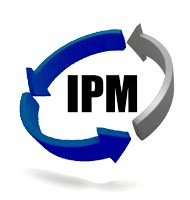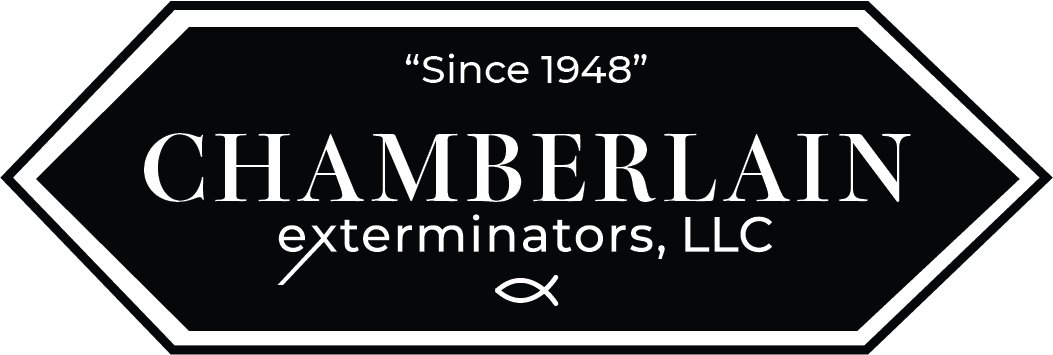Pest Control Services
Solutions to keep you and your home safe and free of pests

Integrated Pest Management
Insects in your kitchen? Certainly not as invited guests! However, they are versatile little creatures and can sometimes slip past even the most fastidious home owner.
New methods of pest control are undergoing rigorous testing required by regulatory agencies and, out of this process, come methods for controlling pests with less insecticides using such materials as baits and dusts. This trend toward using more non-chemical pest control techniques is popularly known as Integrated Pest Management (IPM).
“The first step in any Integrated Pest Management approach is to identify the problem, and then determine what kind of insect is involved, where it is coming from and whether or not it poses a health or property hazard,” says Eddie Chamberlain of Chamberlain Exterminators.
The pest’s biology can provide hints about its control. For example, German cockroaches need hiding places, food and water to survive and multiply. Caulking the cracks and crevices in your kitchen and bathroom, cleaning up even the smallest crumbs of food, and eliminating puddles and leaks are all simple and straightforward Integrated Pest Management techniques that you can use as a homeowner.
Integrated pest management is the combining of appropriate pest control tactics into a single plan (strategy) to reduce pests and their damage to an acceptable level. Using many different tactics to control a pest problem tends to cause the least disruption to the living organisms and nonliving surroundings at the treatment site. Relying only on pesticides for pest control can cause pests to develop resistance to pesticides, can cause outbreaks of other pests, and can harm surfaces or nontarget organisms. With some types of pests, use of pesticides as the only tactic will achieve very poor control. To solve pest problems you must:
- identify the pest or pests and determine whether control is warranted for each,
- determine your pest control goal(s)
- know what control tactics are available,
- evaluate the benefits and risks of each tactic or combination of tactics,
- choose a strategy that will be most effective and will cause the least harm to people and the environment,
- use each tactic in the strategy correctly,
- observe local, State and Federal regulations that apply to the situation.
The strategy you choose will depend on the pest you have identified and the kind and amount of control you need.
Natural Controls
Weather conditions, especially temperature, day length, and humidity, affect pests’ activity and their rate of reproduction. Pests may be killed or suppressed by rain, freezing temperatures, drought, or other adverse weather. Climate also affects pests indirectly by influencing the growth and development of their hosts. A population of plant-eating pests is related to growth of its host plants. Unusual weather conditions can change normal patterns so that increased or decreased damage results.
Birds, reptiles, amphibians, fish, and mammals feed on some pests and help control their numbers. Many predatory parasitic insect and insect-like species feed on other organisms, some of which are pests. Pathogens often suppress pest populations.
Features such as mountains and large bodies of water restrict the spread of many pests. Other features of the landscape can have similar effects.
Pest populations can thrive only as long as their food and water supply lasts. Once the food source – plant of animal – is exhausted, the pests die or become inactive. The life cycle of many pests depends on the availability of water.
The availability of shelter can affect some pest populations. Overwintering sites and places to hide from predators are important to the survival of some pests.
Applied Controls
Biological control involves the use of natural enemies – parasites, predators, and pathogens. You can supplement this natural control by releasing more of a pest’s enemies into the target area or by introducing new enemies that were not in the area before. Biological control usually is not eradication. The degree of control fluctuates. The is a time lag between pest population increase and the corresponding increase in natural controls. But, under proper conditions, sufficient control can be achieved to eliminate the threat to the plant or animal to be protected. Biological control also includes methods by which the pest is biologically altered, as in the production and release of large numbers of sterile males and the use of pheromones or juvenile hormones. Pheromones can be useful in monitoring pest populations. Placed in a trap, for example, they can attract the insects in a sample area so that pest numbers can be estimated. Pheromones also can be a control tool. Sometimes a manufactured copy of the pheromone that a female insect uses to attract males can be used to confuse males and prevent mating, resulting in lower numbers of pests. Applying juvenile hormones to an area can reduce pest numbers by keeping some immature pests from becoming normal, reproducing adults.
Cultural practices sometimes are used to reduce the numbers of pests that are attacking cultivated plants. These practices alter the environment, the condition of the host plant or the behavior of the pest to prevent or suppress an infestation. They disrupt the normal relationship between the pest and the host plant and make the pest less likely to survive, grow, or reproduce. Common cultural practices include rotating crops, cultivating the soil, varying time of planting or harvesting, planting trap crops, adjusting row width, and pruning, thinning, and fertilizing cultivated plants.
Devices, machines, and other methods used to control pests or alter their environment are called mechanical or physical controls. Traps, screens, barriers, fences, nets, radiation, and electricity sometimes can be used to prevent the spread of pests into an area. Lights, heat, and refrigeration can alter the environment enough to suppress or eradicate some pest populations. Altering the amount of water, including humidity, can control some pests, especially insects and disease agents.
Sanitation practices help to prevent and suppress some pests by removing the pests themselves or their sources of food and shelter. Urban and industrial pests can be reduced by improving cleanliness, eliminating pest harborage, and increasing the frequency of garbage pickup. Management of pests attacking domestic animals is enhanced by good manure management practices. Carryover of agricultural pests from one planting to the next can be reduced by removing crop residues. Other forms of sanitation that help prevent pest spread include using pest-free seeds or transplants and decontaminating equipment, animals, and other possible carriers before allowing them to enter a pest-free area or leave an infested area. The proper design of food-handling areas can reduce access and shelter for many pests.
Pesticides are chemicals used to destroy pests, control their activity, or prevent them from causing damage. Some pesticides either attract or repel pests. Chemicals that regulate plant growth or remove foliage also are classified as pesticides. Pesticides are generally the fastest way to control pests. In many instances, they are the only tactic available.
